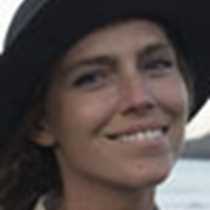Guests onboard National Geographic Endeavour II spent the day exploring Española Island. Two options were offered this morning to explore the marine realm of the island; passengers could either go to the beach to receive tips and tricks from their naturalists in order to maximize their snorkeling experience throughout the week, or they could disembark for deep water snorkeling at Gardner Islet. Deep water snorkelers joined beachgoers on the beach after snorkeling at Gardner Islet.
In the afternoon, we disembarked for a hike at Punta Suarez. The physical characteristics of the island are indicative of its age. Islands have a life cycle themselves; when they grow older, they become flatter as landmasses erode and sink into the sea. Española is the oldest island in the Galapagos and one of the flattest. Given that evolutionary processes have been occurring for millions of years on Española, it is home to several species that cannot be found on any other island in the archipelago. Some species endemic to Española Island include the mockingbird, lava lizard, ground finch, a marine iguana subspecies, and the waved albatross.
We were overjoyed to see so many waved albatrosses on the trail today. Many individuals were incubating eggs, and mating pairs preened and engaged in ceremonial dances. The albatrosses leave land in January to feed on the nutrient rich waters of Peru until they return in April. Upon their return, they find their mate and begin the business of producing offspring. Courtship ceremonies are observed throughout the year while the birds are still in Española, often by unmated individuals or pairs that have not hatched a chick. They are the only albatross species to live in the tropics. These albatrosses have one of the largest wingspans of any bird on the planet.
Española ground finches and large cactus finches were also spotted. Blue-footed boobies lined the trail with several pairs caring for very young hatchlings. Toward the end of the trail, guests enjoyed observing the blowhole at Punta Suarez. Families took turns snapping action shots with this impressive view.
Photo caption and photographer: A waved albatross incubates an egg right along the trail at Punta Suarez. The albatross will rear a single hatchling per season. The waved albatross is considered critically endangered, with approximately 33,000 individuals in the world. Photo by Alexandra Widman







